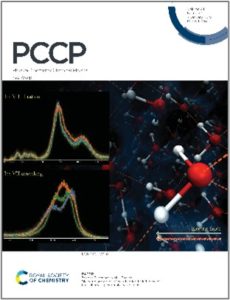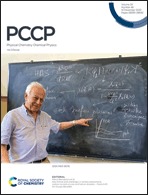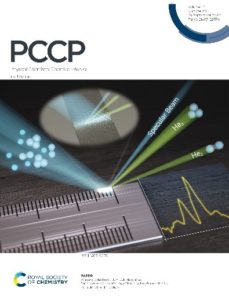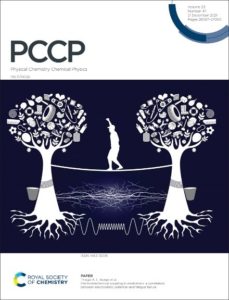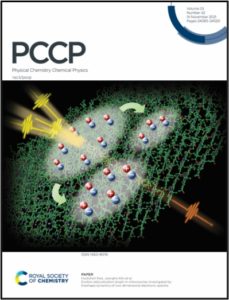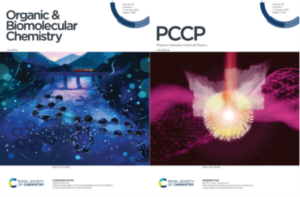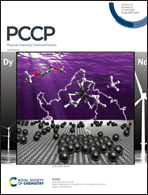We are delighted to announce that the Physical Chemistry Chemical Physics (PCCP) themed issue Ions, electrons, coincidences and dynamics: Festschrift for John H.D. Eland is now online and free to access until the end of June 2023.
John H.D.Eland has been a key player in many developments of ionisation of atoms, molecules and clusters. He is particularly recognised as a pioneer of double photoionisation and ionisation-induced phenomena and dynamics. John has remained at the forefront of this growing field over the past two decades, and this Festschrift issue celebrates his 80th birthday to honour his contribution and achievements to the field.
Guest Edited by Professors Raimund Feifel, Majdi Hochlaf and Stephen Price this collection reviews the very recent achievements and progress in our understanding of physics and chemistry associated by ionisation.
Read the full issue online
It includes:
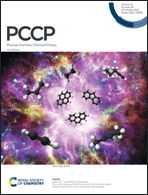 |
Editorial Ions, electrons, coincidences and dynamics Raimund Feifel, Majdi Hochlaf, Stephen Price Phys. Chem. Chem. Phys., 2023, 25, 5911-5912. DOI: 10.1039/D2CP90239G Perspective |
Review
Photoelectron-photoion(s) coincidence studies of molecules of biological interest
P. Bolognesi and L. Avaldi
Phys. Chem. Chem. Phys., 2022, 24, 22356-22370. DOI: 10.1039/D2CP03079A
Paper
Site-dependent nuclear dynamics in core-excited butadiene
Shabnam Oghbaiee, Mathieu Gisselbrecht, Noelle Walsh, Bart Oostenrijk, Joakim Laksman, Erik P. Månsson, Anna Sankari, John H. D. Eland and Stacey L. Sorensen
Phys. Chem. Chem. Phys., 2022, 24, 28825-28830. DOI: 10.1039/D2CP03411E
Paper
The kinetic energy of PAH dication and trication dissociation determined by recoil-frame covariance map imaging
Jason W. L. Lee, Denis S. Tikhonov, Felix Allum, Rebecca Boll, Pragya Chopra, Benjamin Erk, Sebastian Gruet, Lanhai He, David Heathcote, Mehdi M. Kazemi, Jan Lahl, Alexander K. Lemmens, Donatella Loru, Sylvain Maclot, Robert Mason, Erland Müller, Terry Mullins, Christopher Passow, Jasper Peschel, Daniel Ramm, Amanda L. Steber, Sadia Bari, Mark Brouard, Michael Burt, Jochen Küpper, Per Eng-Johnsson, Anouk M. Rijs, Daniel Rolles, Claire Vallance, Bastian Manschwetus and Melanie Schnell
Phys. Chem. Chem. Phys., 2022, 24, 23096-23105. DOI: 10.1039/D2CP02252D
Paper
Fragmentation of interstellar methanol by collisions with He˙+: an experimental and computational study
Vincent Richardson, Emília Valença Ferreira de Aragão, Xiao He, Fernando Pirani, Luca Mancini, Noelia Faginas-Lago, Marzio Rosi, Luca Matteo Martini and Daniela Ascenzi
Phys. Chem. Chem. Phys., 2022, 24, 22437-22452. DOI: 10.1039/D2CP02458F
Paper
Asymptotic behavior of the electron-atom Compton profile due to the intramolecular H-atom motion in H2
Yuuki Onitsuka, Yuichi Tachibana and Masahiko Takahashi
Phys. Chem. Chem. Phys., 2022, 24, 19716-19721. DOI: 10.1039/D2CP02461F
We hope you enjoy reading the articles. Please get in touch if you have any questions about this themed collection or PCCP.











